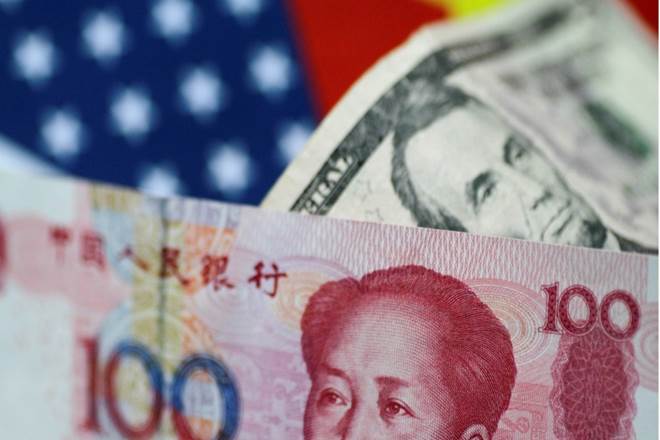>>REAL-TIME UPDATES IN THE WIRE. CLICK HERE<<<
Chinese yuan weakened sharply against the US dollar to break through 7.34 per dollar mark on Thursday after latest data showed further weakness in the economy and amid expectation that the US Federal Reserve may hike interest rate further to combat inflation.
The offshore yuan weakens sharply to break through 7.34 per dollar mark and hit 7.3494 at one point, marking the weakest level since November 2022, before paring loss to trade around 7.3156 as of 10:15 pm, Hong Kong time.
The onshore yuan broke through 7.31 per dollar mark and hit 7.3180 at one point before recovering 7.3 per dollar mark, trading around 7.2930.
Before the market open, the People’s Bank of China (PBOC) cut the yuan’s fixing by 90 pips to 7.2076 per US dollar, the weakest level since July 6.
The latest FOMC meeting minutes released on Wednesday indicates the US Federal Reserve may not be done with rate hikes. While some officials were prepared to continue June’s interest rates hike pause, members continue to view inflation as a threat and are willing to hike rates further to address it, showed the minutes.
Most participants “continued to see significant upside risks to inflation, which could require further tightening of monetary policy,” according to the minutes.
Late on Thursday, the PBOC said in its quarterly monetary policy report that it will implement a managed floating exchange rate system, take comprehensive measures to stabilize market expectations and maintain the yuan’s exchange rate at a reasonable and balanced level and resolutely prevent the risk of yuan overshooting.
The PBOC remarks led to sharp strengthening of the yuan, with offshore yuan recovering 7.3 per dollar mark at one point.
In addition, China’s state-owned banks are said to have sold US dollars and buy the yuan in both onshore and offshore spot foreign exchange markets this week to curb the yuan’s depreciation,
Offshore branches of the state banks were also seen selling dollars during London and New York trading hours, according to traders.
The yuan has lost about 2.4% against the greenback so far in August and by 6% year to date as the yield gap between China and the US widens and market is increasingly concerned about China’s slwoing economic growth and rising default risks in its real estate sector.

